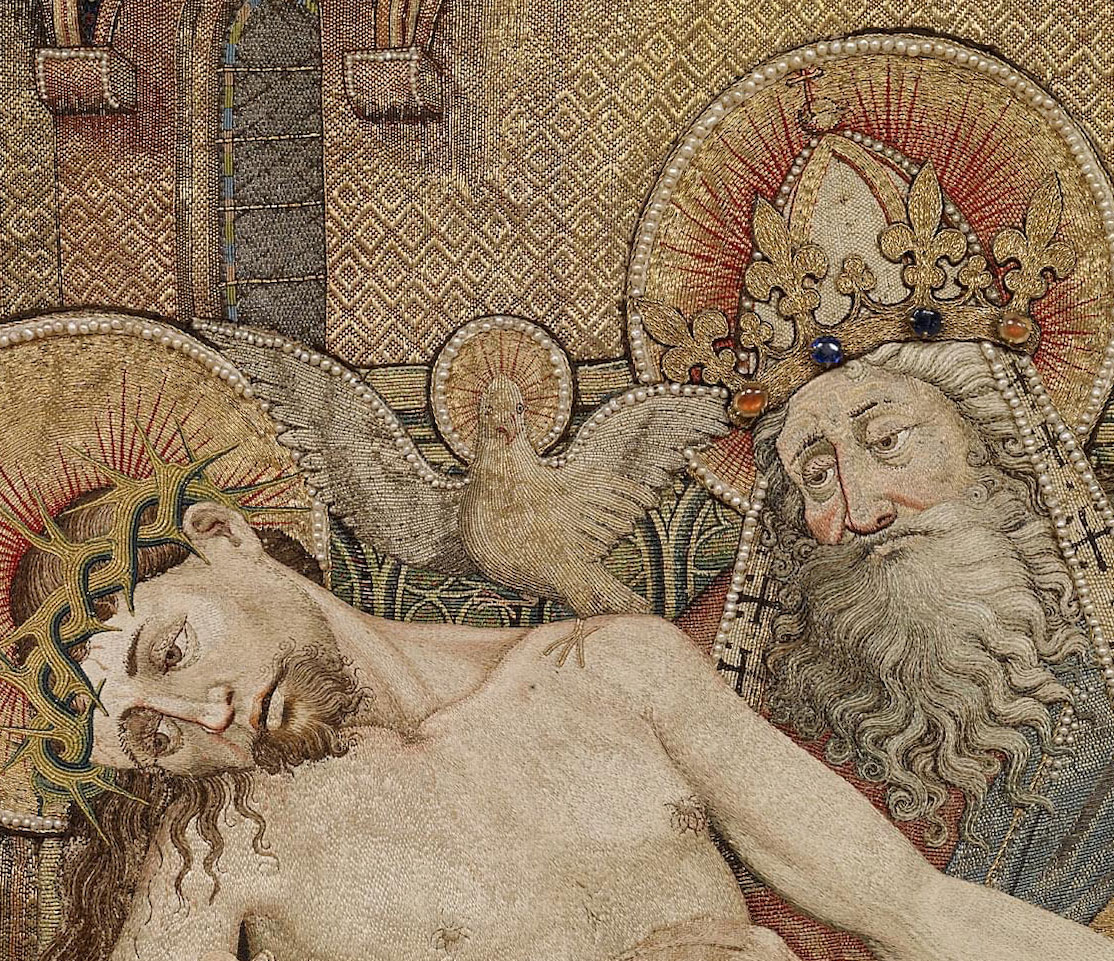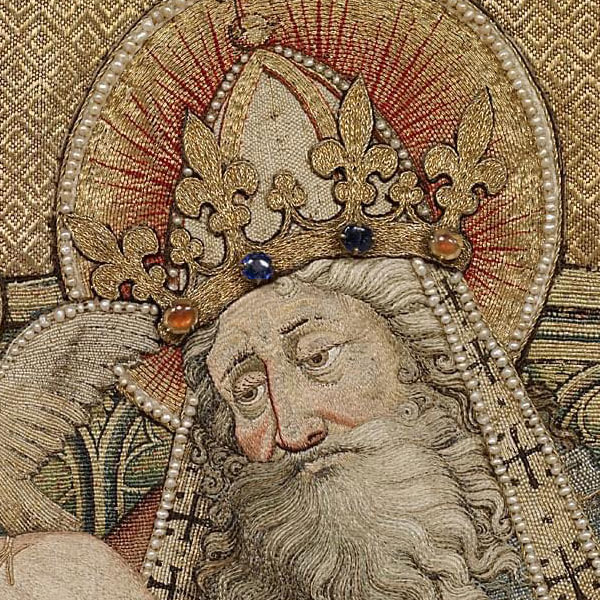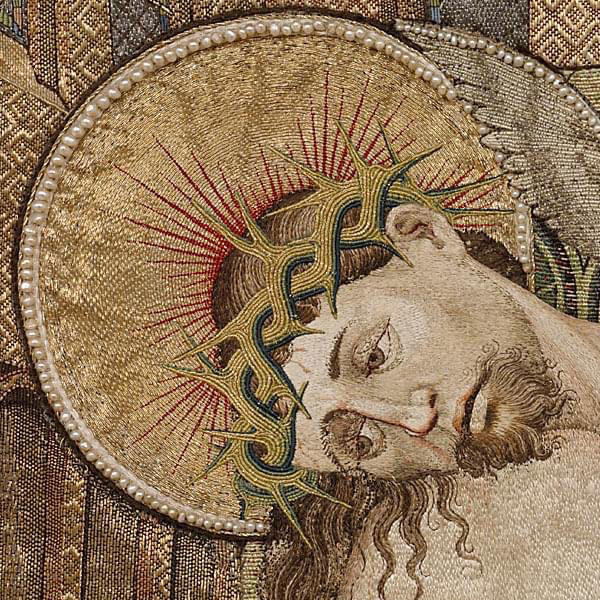Today, on Good Friday, I thought I’d share a highlight from the regalia or paraments of the Order of the Golden Fleece.
The details below come from this antependium (a hanging made for the front of an altar), which is held at the Imperial Treasury of Vienna (Kunsthistorisches Museum Wien, Kunstkammer).
Can you imagine embroidering something like this? Or at least being a member of the company of artisans who embroidered it?

You can click on the photo for a much larger version, where you can see actual stitching details.
The embroidery on these paraments of the Order of the Golden Fleece is awe-inspiring. This Marian cope belongs to the collection. It’s one of my favorite pieces of ecclesiastical embroidery for the sake of study.
This is 15th century embroidery (1425 – 1440). Imagine: no daylight lamps, no magnification, no climate control… not even the easy-to-acquire needles that we’re used to today.

The whole panel in the center of this antependium illustrates the “Notgottes” or the “Distress of God.” Symbolically, it portrays the Holy Trinity after Christ is removed from the Cross – God the Father holding His crucified Son, with the Holy Spirit symbolized by the dove on Christ’s shoulder.

The antependium is embroidered on a linen ground fabric in silk and goldwork embroidery, with pearls and gemstones. Velvet is also listed as part of the ground.
It’s pretty incredible to think that, 900 years later, these pieces still exist and are available for us to view and to wonder about.
Easter Break
On that note, I’d like to wish you and yours a Happy Easter this Sunday!
I’ll be taking a short break for Easter. Even though I’ll be stitching the whole time (speaking of ecclesiastical embroidery, the deadline is fast approaching for this piece), I won’t be blogging again until next Wednesday, and all other studio functions, including shipping, will also be on hold. Any orders placed today through next Tuesday will ship Wednesday.
Have a beautiful weekend! See you next week!







Ecclesiastical embroidery is my favorite. I took up crafts to help me quit smoking 14 years ago. I wish I had the courage to pursue an embroidery form of excellence back then or earlier. This piece is magnificent. Happy Easter!
Thank you Mary, for sharing this amazing embroidery with us. What strikes me most, even more than the gorgeous embroidery, is the concept behind the image itself. How the expression on God’s face reflects the anguish He felt at Christ’s death! And the Holy Spirit as a dove. Reminds me of the verses in 2 Corinthians 5:19-21, that says that God was in Christ, reconciling the world to Himself.
I saw these in person in Vienna in 2013, and the skill apparent in the or nué technique was breathtaking. I can only imagine what they looked like new. Even in the low-light display behind glass they’re unbelievable.
Oh wow! I know! I often imagine these types of works – or any of the old museum pieces we see – brand new. The gold! the colors! I think it would really astound us today. I work a lot with older ecclesiastical goods that have faded and need repair or refurbishing. I tell the people I do it for that if they saw these pieces brand new, with new (clean) silk, bright gold threads, etc., they’d probably think they were gaudy, they’d be so bright and shining and sparkling!
I am in total and complete **awe** (the true spiritual awe) at the GLORY of those pieces. The fact that mere human hands made them … I just can’t quite explain the feeling … except to say Isaiah, chapter 6. That’s what the pieces bring to me.